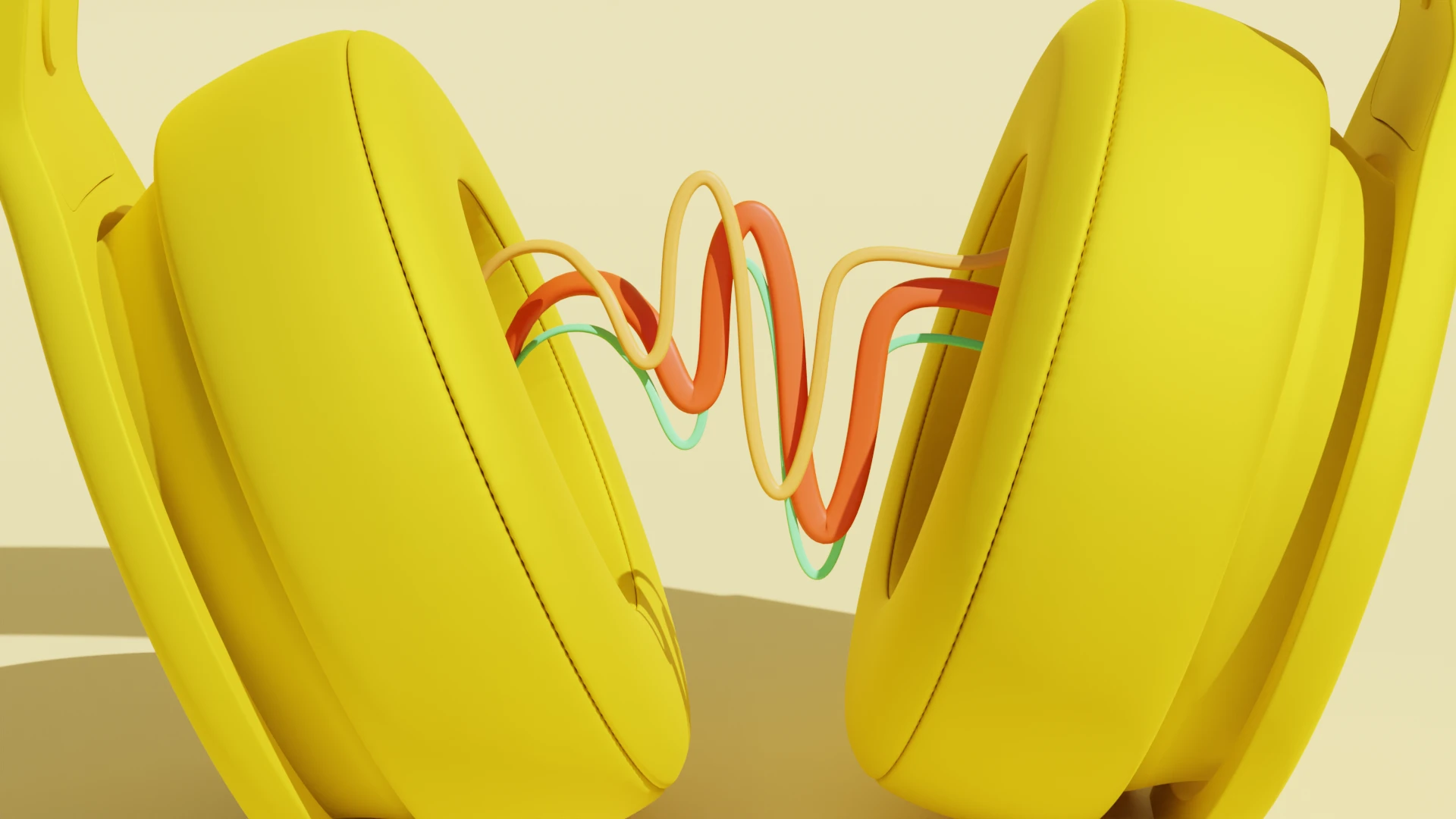You don’t need access to a recording studio or a radio station to start a podcast. You just need the right gear.
For most creators, a good laptop for recording and editing is the most fundamental piece of podcast equipment — the centerpiece of the setup. You probably already have one.
But if your trusty computer has seen better days, you may want to invest in a faster, more powerful piece of equipment for your podcast starter kit.
Here are the top machines we’ve found work best.
Top laptop picks for podcasting
- Apple MacBook Air: Portability
- Apple MacBook Pro: High-end
- HP Spectre x360: For most podcasters
- ASUS VivoBook 5510UA: Budget friendly
- Microsoft Surface Pro 9: Detachable 2-in-1
- Dell XPS 15: Desktop replacement
- Lenovo IdeaPad 5: Affordability
What to look for in a podcasting laptop or computer
You want a machine that does more than survive your editing spree — you need it to keep your creative flow uninterrupted. That means choosing a laptop or desktop that doesn’t choke on multiple audio tracks, a few video layers, and all the reverb your heart desires.
Processing power. When you run audio and video editing applications on a laptop computer, you lean heavily on the machine’s processing power. A computer’s central processing unit (CPU) handles the complex computational tasks that enable edits like crossfading audio or adding reverb to a recorded track. Look for a model with an up-to-date processor, which will likely remain functional for many years to come.- Memory. A computer’s memory is described as RAM (random access memory). The more RAM your computer has, the faster it responds to commands. Most podcast editing software runs smoothly on a machine with at least 8GB of RAM. But if your budget allows for it, aim for 16GB RAM or more.
- Software compatibility. A podcast computer’s software compatibility depends on its operating system. Most digital audio workstations, or DAWs — the audio editing software you’ll be using to make your podcast — run on both MacOS and Windows operating systems. Some even run on mobile operating systems like iOS, iPadOS, and Android. But not all programs run on all operating systems. To use GarageBand or Logic Pro, you need an Apple machine running MacOS (or in some cases iOS or iPadOS). Other programs only run on Windows. Research your software’s operating system compatibility, minimum RAM, and processing power requirements before committing to a particular computer for audio editing.
- Screen size. Podcasting is all about sound quality, but the best computers for podcasting offer ample screen real estate. A large screen helps you see all your editing windows without having to toggle back and forth between them. If you’re getting a laptop, aim for one that’s at least 13 inches (computer screens are measured by the distance from one corner of the screen to the diagonally opposite corner). If you can afford a laptop with a 15-inch or 16-inch screen, even better.
- Battery life. If you plan to use a laptop for field recording, you need reliable battery life. Recording in a far-flung location with no power outlets means all the computing power comes from your laptop’s battery. To ensure optimal battery life, check the computer’s spec sheet, which tells you its estimated battery capacity. You can extend battery life by shutting down unnecessary applications and dimming your screen.
- Chromebooks. If you’re eyeing a Chromebook, check whether your preferred editing software runs on ChromeOS. Many advanced, multitrack audio or video programs need more robust hardware, so a Chromebook might not support them natively. For purely cloud-based editing or simple audio tasks, it can work — just confirm software compatibility first.
Best laptops and computers for podcasting
If you’re in the market for a podcasting laptop, be sure to look into the following seven models.
1. Apple MacBook Air
Best: Portable podcasting laptop
Reasons to buy:
- Lightweight
- Long battery life
- Part of Apple ecosystem
 |
The MacBook Air is Apple’s entry-level laptop. If you’re using your laptop to record and edit podcasts, a MacBook Air has all the processing power you need as a beginner.
The newest model comes in two configurations, with an 8-core or 10-core GPU. The new chip (Apple’s M2 Silicon) is said to deliver 18% better CPU and 25% better GPU performance over previous models.
Other features include:
- 13.6-inch Liquid Retina Display
- Faster or dual charging
- 1080p FaceTime HD camera
- Four-speaker sound system
- Thinner and lighter than its predecessor
- 18 hours of battery life
The MacBook Air is incredibly lightweight, but pricey — a well-equipped M2 model costs roughly $1,199, though they tend to last a long time.
2. Apple MacBook Pro
Best: High end podcasting laptop
Reasons to buy:
- Extra processing power
- High-resolution display
- Built-in microphones and speakers
 |
If you’re a Mac enthusiast who also does multitrack music recording or video editing, you may need to upgrade to the more powerful MacBook Pro. This machine runs the same OS as the MacBook Air and it can handle all the same software, but it offers more processing power and a larger screen.
Features include:
- The new M2 Pro and M2 Max chips, which are more power-efficient and provide significant improvements in performance and battery life
- Supports up to 96GB of unified memory, allowing for extensive and demanding professional workflows
- Battery life of up to 22 hours, the longest ever in a Mac
- Advanced HDMI supporting 8K displays
- 1080p FaceTime HD camera
- Six-speaker sound system
- Studio-quality microphones
The MacBook Pro is designed to minimize its environmental impact, with components made from recycled materials, energy-efficient design, and a commitment to achieve net-zero climate impact across the entire manufacturing supply chain and product life cycles by 2030.
Note that you need an Apple device if you want to run the highly popular Logic Pro audio editing software. The MacBook Pro may also be the best computer for Pro Tools. If you thought the MacBook Air was pricey, you might want to sit down for this one: the 14-inch model starts at $2,500.
3. HP Spectre x360
Best: For most podcasters
Reasons to buy:
- Sleek, sturdy design
- Versatile 2-in-1 laptop
- High quality Bang & Olufsen speakers
 |
For a Windows machine, podcasters should check out the HP Spectre x360. Technically a laptop, it has a touchscreen that folds back to resemble a tablet. The Spectre x360 uses an Intel Core i7-1255U Processor or an Intel Core i5-1235U Processor, which offers more than enough power for podcasting.
Other notable features include:
- Dual channel memory support and runs at 4266 MT/s with a maximum memory capacity of 32 GB
- Various storage options, including 512 GB, 1 TB, and 2 TB PCIe NVMe TLC M.2 solid-state internal hard drive with Gen 3.0 and Gen 4.0
- Corning Gorilla Glass NBT touchscreens that support pen and touch
- Comes with Intel AX211 or AX411 Wi-Fi 6E multi-user MIMO supported and Bluetooth 5.2. It also supports Miracast
- Battery life can last up to 13 hours and 30 minutes for OLED screens and up to 21 hours and 50 minutes for WUXGA+ screens
It weighs more than a MacBook Air or a true tablet, but less than a MacBook Pro and many other Windows laptops. Expect to pay around $2,000 for a model with 16GB of RAM.
4. ASUS VivoBook F510UA
Best: Budget laptop
Reasons to buy:
- Low price
- Large FHD display
- Competitive performance
 |
For a budget laptop, consider the ASUS VivoBook F510UA. This machine runs an Intel Core i5 processor (the lowest-powered processor on this list) and has 8GB of DDR4 RAM (the minimum you can get away with), but it’s still enough for the vast majority of audio-editing apps.
Other features include:
- Intel Core i5-8250U processor and Intel UHD Graphics 620
- 15.6” Full HD (1920 x 1080) IPS (In-Plane Switching) that provides wide viewing angles and good color reproduction
- 1TB HDD for storage
The laptop includes several features like a fingerprint reader for enhanced security, a web camera for video calls, a backlit keyboard for ease of use in low light conditions, a microphone, speakers, an optical drive, and a security lock slot.
While its battery life isn’t impressive (only 4 hours), the price certainly is: $580. ASUS has built a reputation as a reliable Windows-running brand.
5. Microsoft Surface Pro 9
Best: Detachable 2-in1 laptop
Reasons to buy:
- User upgradeable storage
- Impressive battery life
- Excellent for multitasking
 |
Our next pick is a tablet computer that functions much like a laptop. Microsoft promotes its Surface brand as a great option for creatives, and this extends to podcasting.
Microsoft sells these devices at different price points, and each has its own set of specs. Make sure you choose a model with at least 8GB of RAM and an Intel Evo Platform Core i5 processor.
Some unique features of the Surface Pro 9 are:
- Windows Hello facial-recognition camera and a front-facing camera
- Dual Studio Mics and a Surface Connect port
- 12th Gen Intel Core processor or a Microsoft SQ 3 processor
- Edge-to-edge 13” PixelSense touchscreen designed for pen and Windows 11
- Intel Evo 12th Gen processor and Thunderbolt 4 ports
- 5G connectivity and enhanced video calling experiences with the Microsoft SQ 3 processor
You can get the Surface Pro 9 starting at $999. For this price, you get a machine that’s about as powerful as the above-mentioned ASUS or Acer devices, but more portable.
6. Dell XPS 15
Best: Desktop replacement laptop
Reasons to buy:
- High quality audio playback
- All day battery life
- Lightning performance
 |
The Dell XPS series is known for its high-quality construction, excellent performance, and impressive display.
If you’re running an audio or video podcast, the Dell XPS 15 is the perfect laptop. It's easy to run audio editing software smoothly, has sufficient storage for large audio files, and provides a quality audio system for playback during editing.
Some unique features include:
- 12th Gen Intel Core i5-12500H processor with 18 MB cache
- Windows 11 Home operating system, compatible with various audio editing software
- 15.6" FHD+ or 3.5K display
- 16 to 64 GB of DDR5 memory and 512 GB to 8 TB of M.2 PCIe NVMe SSD storage
- Integrated HD camera and dual-array microphones for high-quality video and audio recording
- Stereo woofers and tweeters that produce a total peak output of 8 W
The Dell XPS 15 also has robust build quality and good battery life, making it reliable for those who may be working in different locations.
7. Lenovo IdeaPad 5
Best: Affordable
Reasons to buy:
- Excellent value
- Light and sturdy
- Comfortable keyboard
 |
Lenovo has a reputation for building reliable computers, and the IdeaPad series is no exception for podcasters.
The IdeaPad 5 comes with a powerful processor and fast SSD storage, so you can run audio editing software smoothly. It’s also lightweight and portable for when you need to record or edit on the go.
The IdeaPad 5 also has the following features:
- Premium 11th Gen Intel Core processing capability
- 14” FHD screen with a narrow border
- Webcam privacy shutter & fingerprint reader
- Dolby Audio speakers
- USB-C port for quick data transfer or connecting audio interfaces
- Quick Charging feature, which can fully charge your battery in no time
- Built-in microphone which can serve as a backup recording option
Price starts at $609 for the AMD Ryzen processor. The IdeaPad with an Intel processor starts at $709.99.
Laptop vs. desktop—which to choose for recording podcasts
You can record and edit podcasts on both laptop and desktop computers. Choosing between them is part preference and part practicality — ask yourself if you need to be mobile or if you’d rather have more raw processing power at a lower price.
Laptops give you the freedom to record wherever you are: hotel room, coffee shop, broom closet that’s surprisingly echo-free — anywhere. They’re portable, power-efficient, and often come with integrated mics and webcams.
Desktops, on the other hand, are typically the powerhouse choice. You’ll often get more bang for your buck, easily upgrade parts, and handle more CPU-intensive tasks (like that 30-track audio drama you’ve been itching to produce). The trade-off? They’re as portable as your couch.
Pros and cons of using a laptop for podcasting
The best laptops for podcasting have a lot of power under the hood while also being compact and easy to carry.
We asked seven podcasters what they used to edit their work, and all seven said they used laptops instead of desktops. Here are three advantages of using a laptop for podcasting:
- Portability. A laptop computer can be your on-the-go recording studio. Bring it along with your podcast mic for field recording, and enjoy all the same functionality you’d get in your home or office environment. You can turn just about any location, from a theater to a hotel room, into a sound editing workspace.
- Impressive processing power. In decades past, audio and video editors needed desktop computers to handle processor-intensive tasks like editing audio. But thanks to massive advances in CPU technology, a modern laptop processor can handle these hefty recording and editing tasks. This lets audio editors forego a desktop altogether and do all their work on a laptop.
- Low power usage. Most laptop computers use less overall power than desktop computers (which usually require a separate monitor that also needs power). While laptops aren’t quite as energy-efficient as most smartphones and tablets, they offer considerably more processing power.
Still, there are a few reasons why some podcasters may not want a laptop as their podcast workstation. Here are three disadvantages of using a laptop for podcasting:
- Price. Laptops are typically more expensive than desktop computers with equivalent processing power.
- Lack of customizability. It’s much harder to customize a laptop than a desktop. If you’re a custom computer enthusiast, you’ll likely prefer the modular nature of many Windows desktop PCs. Laptops tend to come sealed shut with many parts permanently soldered or glued together, meaning you can’t take them apart to swap in new parts.
- Limited uses. Some podcasters want their podcasting computer to double as a video editing machine. This is where processing power may throw up a roadblock. Video editing — particularly 4K or 8K video editing — requires considerably more processing power than audio editing. For many users, the best computer for video editing and multimedia is a desktop, which can accommodate a more powerful CPU.
Pros and cons of using a desktop for podcasting
When a podcaster opts for a desktop computer, they usually want a powerful but affordable machine they can modify. Here are three advantages of using a desktop for podcasting:
- Affordability. In most cases, a desktop computer costs less than a laptop with equivalent features and processing power.
- Versatility. If you’re looking for a machine that can handle both audio and video editing at once, look no further.
- Customizability. If you like to piece together PCs from modular components, you’ll want to go the desktop route. Laptop computers aren’t built for interchangeable parts.
Here are three disadvantages of using a desktop for podcasting:
- Not portable. You can’t bring a desktop computer to record and edit in far-flung places.
- Fewer integrated parts. When you buy a desktop computer, you might only be buying the main processor machine. A monitor, webcam, keyboard, and graphics card may all be sold separately, which, for some podcasters, can be a headache.
- Overkill for most audio editing apps. While video editing apps require the processing power a desktop provides, audio editing is a different story. Generally, you don’t need a supercharged desktop to cut audio tracks and add effects like reverb and EQ. The major podcast software, like Audacity, Adobe Audition, and Descript, can run smoothly on laptop computers.
Frequently asked questions
Can I record a podcast on my laptop?
Yes. Most modern laptops can handle the basics of recording and editing, especially if they meet our recommended specs (e.g., at least 8GB of RAM and a reliable processor). For clear sound, use an external microphone. If possible, set your mic to a 48kHz sample rate for the best sync and audio quality.
What kind of computer do I need for a podcast?
A stable computer with at least 8GB of RAM, a mid-range processor (like an Intel Core i5 or equivalent), and enough free storage for your recordings. Pick an operating system and hardware you’re comfortable with—Descript supports both macOS and Windows. You’ll also want solid internet access if you plan to record or collaborate with guests remotely.
How much RAM do I need for podcasting?
For most creators, 8GB of RAM is enough for basic editing and recording. If you frequently record multiple tracks or work on bigger audio or video projects, aim for 16GB or more. Extra memory helps your software run smoothly—especially when multitasking.







































%20(1).JPG)





